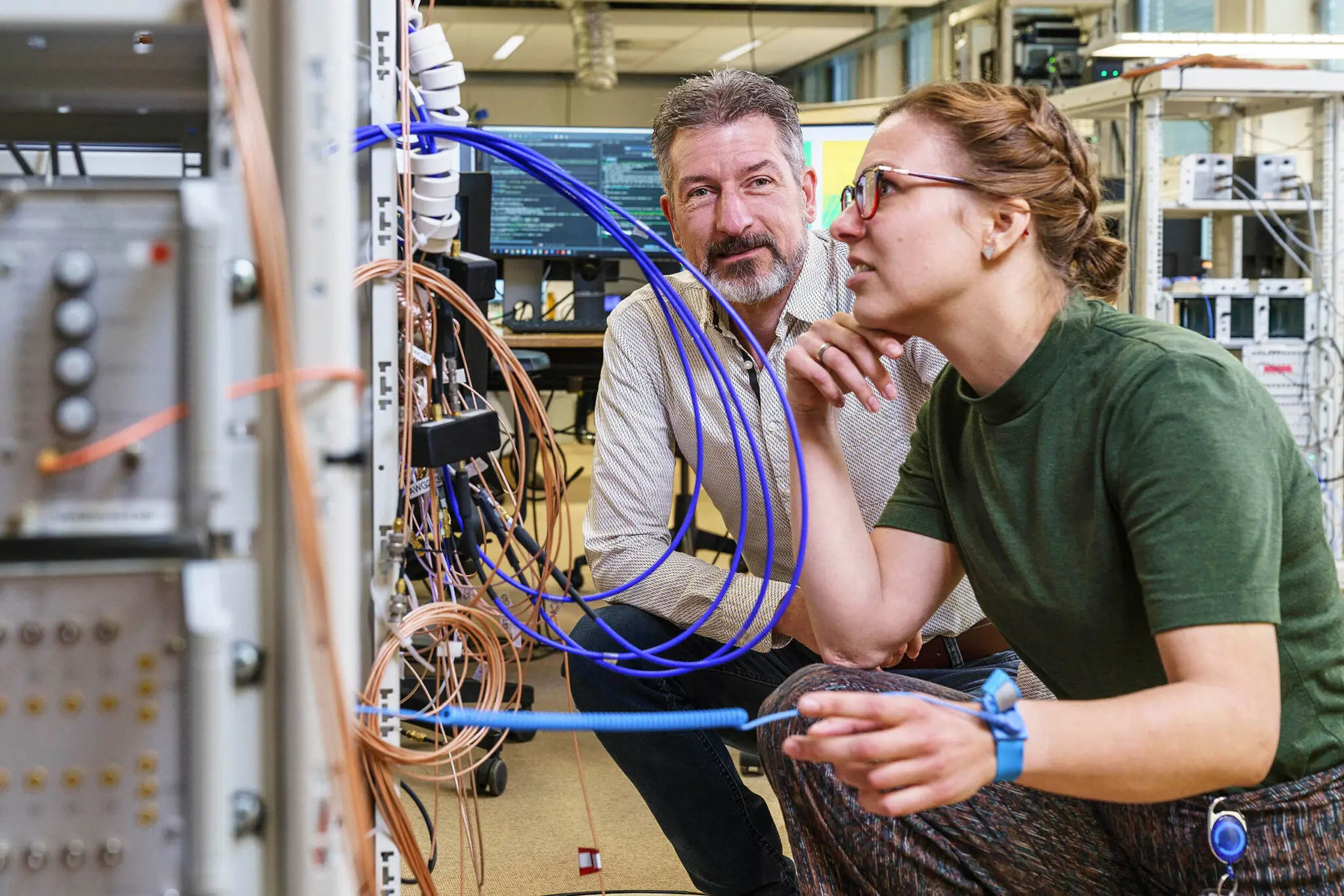In a summery metaphor, QuTech presents new research results as jumps from one trampoline to the next. QuTech is TU Delft and TNO’s institute for quantum computer development. In reality, the news is not about its athletic staff, but about spins that jump from one quantum bit (qubit for short) to another.
The remarkable thing is that the fragile quantum state of the spin, carrier of the quantum information, remains virtually unaffected during the jump. A spin may also rotate during the jump – the press release speaks of a somersault. This proved to especially be the case with qubits in germanium, a semiconductor material.
The researchers talk about ‘registers’ within which spins are moved. In classic computer science, registers are small memory units that temporarily store data for processing as an instruction or calculation.
Analogously, in 1998 theorists wrote that the movement of spins within registers could be the basis for logical operations by quantum computers. But up to now, the experimental confirmation failed to materialise because of the lack of technology. QuTech researchers have now shown in two papers in Nature and Science, that they can indeed make spins jump (‘hop’) from one qubit to another while maintaining their quantum state.
“I am proud of all the team work” summarises QuTech principal investigator Menno Veldhorst. “In the space of a year, the observation of qubit rotations caused by hopping became a tool used by the whole group. To operate future quantum computers, we believe it is crucial to develop efficient control schemes, and this new approach (hopping spins between qubits, Ed.) is promising.”
- More information in QuTech’s news release



Comments are closed.